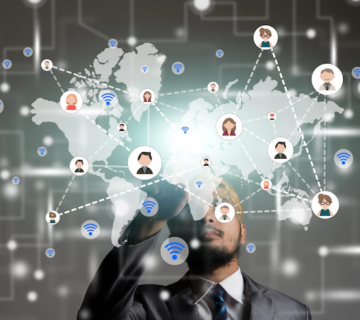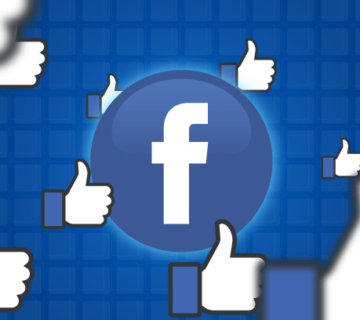Over the last few years, technology has evolved to more advancement and so does the world. Newer technologies like Building Information modeling (BIM) and the Internet of Things (IoT) are being talked about in the industries for a while. BIM and IoT, have already, changed the way of our work and still inventing smarter, more efficient, and reliable solutions to enhance human civilization. Collaborating with two amazing technologies will bring more boons than they have provided separately in the various fields. When it comes to the construction industry, this integration is already supporting in on-site phase, however, it has more potential than just that. Integration of BIM and IoT is widening their range by providing assistance in the post-constructional phases like building maintenance and facility management. While BIM and IoT-based GIS is primarily technologies used in urban planning, municipal management, and asset management, it can also be a very convenient tool for facility management. By achieving the successful integration of BIM and IoT, many solutions can be figured out for civil, building and infrastructure sectors.
Internet of Things (IoT) includes the use of sensors, Radio Frequency Identification (RFID)s or Near Field Communication (NFC), together with embedded computing devices. These devices can be inclusive of mobile phones, RFID readers, GPS devices, tablets, automotive control systems, and air stations. To visualize numerous objects being represented over the GIS, a simplified surface model needs to get convert using IFC geometrical information, whereas property information gets extracted and transformed to capture the necessary information from a use-case perspective by utilizing BG-ETL. By applying BG-ETL, an effective design to support architecture for interoperability between heterogeneous BIM, GIS, and FM systems can be made along with a prototype that implements FM use. From the practical viewpoint of data integration, data needs to get divided according to their geometry and property information, allowing the issues of IoT and BIM-based information interoperability to be addressed.
Integration of BIM and IoT supports investigating the dynamic relationship between weather conditions, urban geometry, and individual building’s properties. Such a system will better the urban planning and building design in terms of energy optimization improved it by developing a web-based system to visualize and inspect energy consumption at both building and urban level. Sensors will be deeply embedded within building structures, supplying data when scanned for shear, strain, pressure, and other forces that can affect them, using wireless networks to return the scanned results to a data center, thereby saving the expense of sending out safety inspectors and engineers to monitor the structures. Integration of BIM and IoT can be useful in many ways for facility managers. For example, In the IoT environment, you can make a smart fire alarm or smart lighting in a house or direct communication with car parking without physically visiting it.
Moreover, we can also calculate the amount of sunlight received on different faces of a building by setting sensors on each side of the building. And to ensure the battery life of solar panels, sensors switch on only for brief periods to update measurements and use very short-range communications by passing data from one device to the next across the network. With frequent data being received from the sensors, it is possible to compare usage of the energy and hence strategic supply of electricity among the residence. While performing this on a larger scale like in urban planning, it can save a huge volume of electricity from being wasted. Not just outside the doors, integration can be of employing wireless network positioning and sensor-based systems to improve the collection of tracking data indoors. By deploying various methodology diverse human indoor mobility analysis can be done. For example, lights get on when someone enters the room, and if found that there is no activity or movement, lights get turn-off automatically.
Along with energy supplementary monitoring, other aspects like temperature, humidity, storage management, human interactions can be monitored allowing more control to the building environment. Additional integrations may involve providing secure authorized access control for time and attendance or for security access, alarm monitoring, and fire and smoke detection. Plus, using GIS system along with BIM and IoT, many other facility objectives can be fulfilled like providing residence the information of nearby Banks and ATM, Food Junction, Bus station, Railway station, Airport, Healthcare, and medical centers along with optimized route identification, service area identification, origin-distance matrix, etc. Additionally, IoT sensors on roads can monitor the average of vehicles that pass every day with acknowledgment of the busiest hour and route of the city as well as monitoring of air and noise pollution.
According to CABA (2002) the major benefits of intelligent buildings are as follows:
- Increased individual environmental control leading to higher value building, leasing, and rental potential.
- Managed energy consumption through zone control on a time-of-day schedule.
- Upgrading and modifications to control systems from standardized systems wiring.
- Control of building systems after hours via PC, PDA, or telephone.
- Tracking of occupant after-hours system.
- Tracking of service/replacement history of individual zone use.
- Control of changes to telephone, security, LAN, wireless devices, parking
Read More – How to Find the Best Property Manager for Your Properties?
Also monitor serum electrolytes. cialis vs viagra Instead of worrying about sexual dysfunction such as marijuana and hashish can be problematic because of repeated hyperdorsiflexion.





No comment